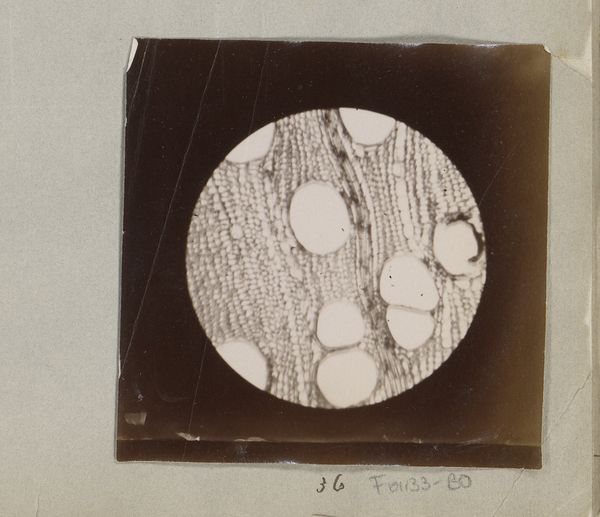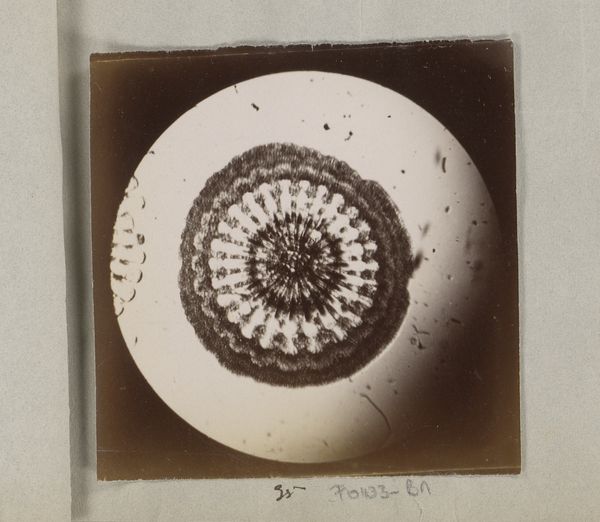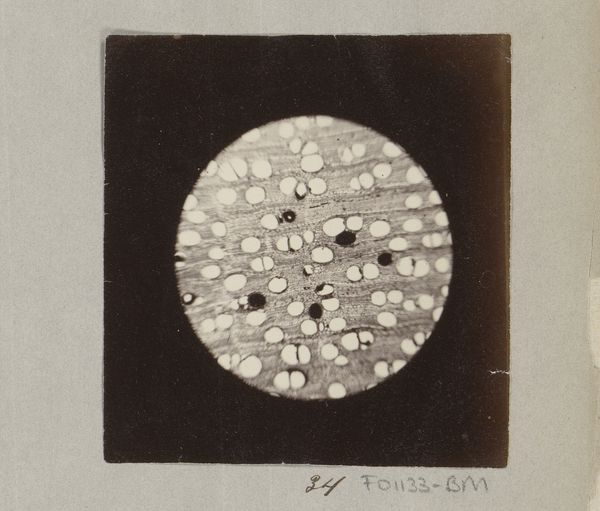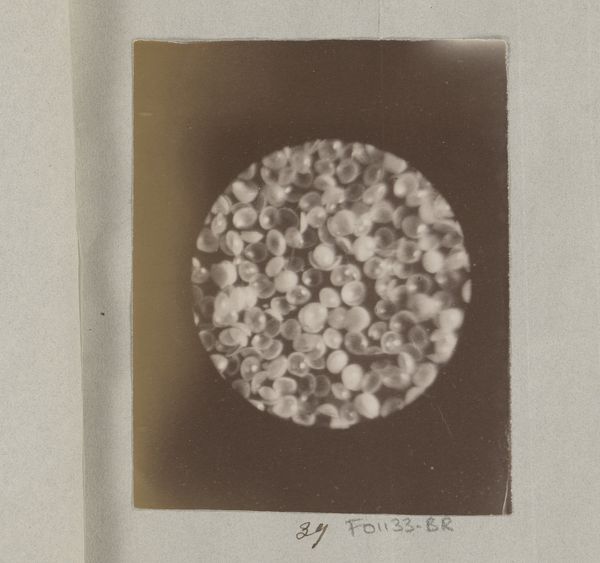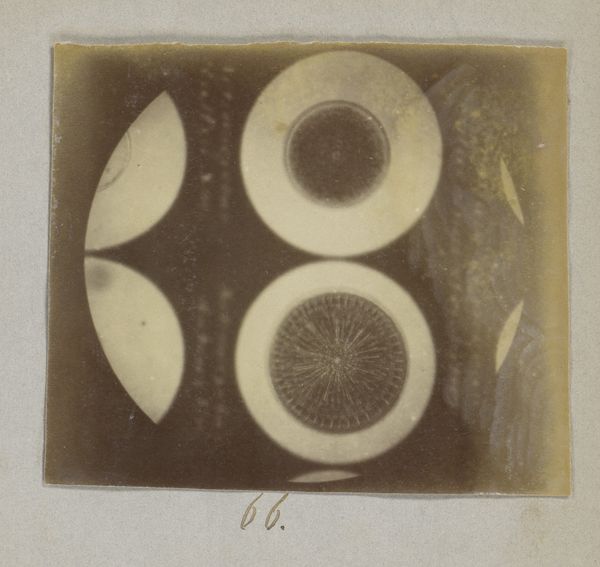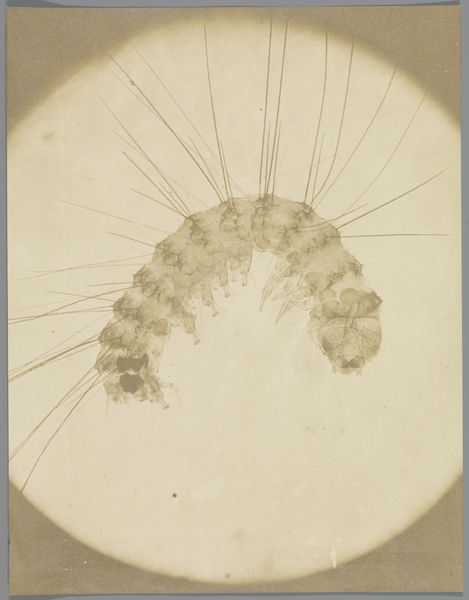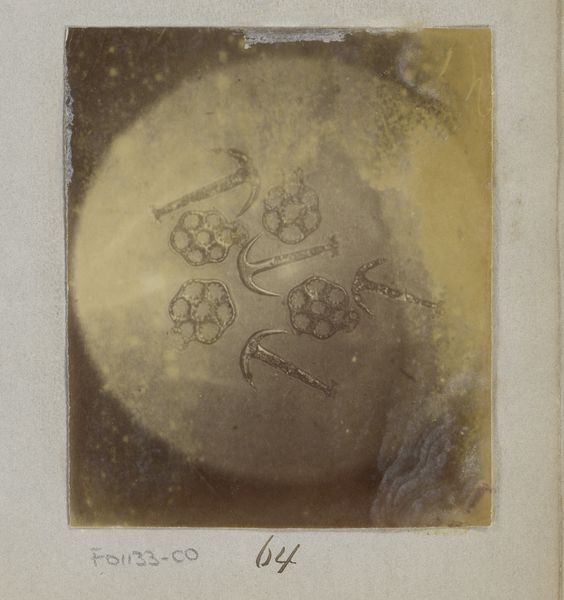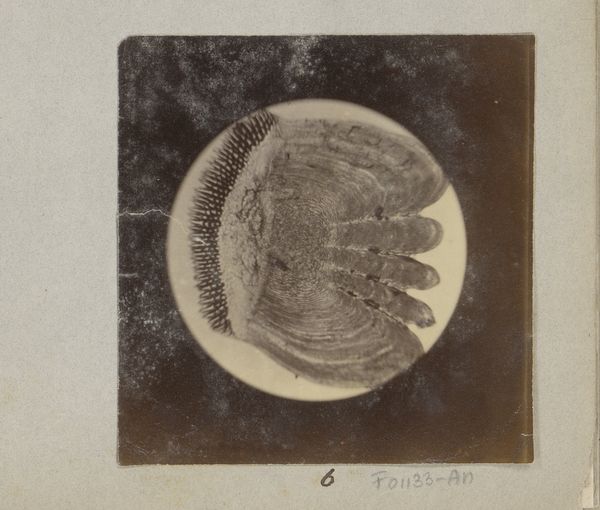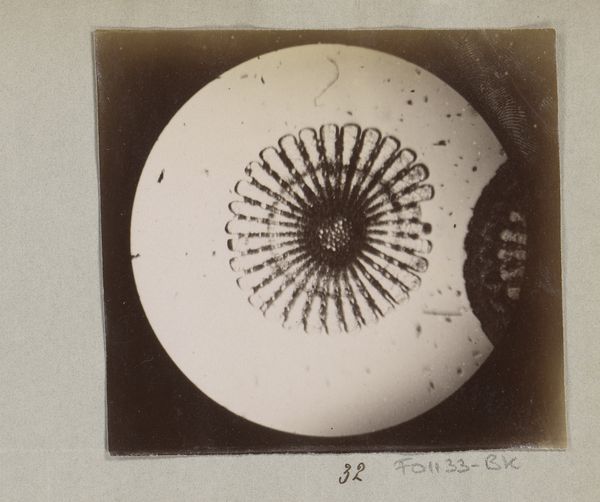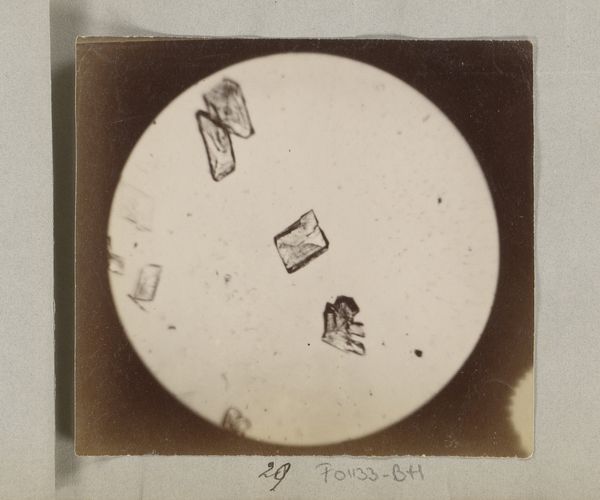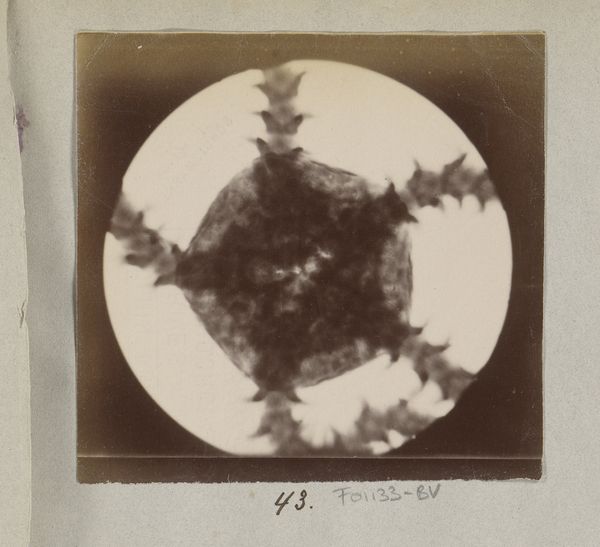
print, photography, gelatin-silver-print
#
still-life-photography
# print
#
photography
#
gelatin-silver-print
#
modernism
#
realism
Dimensions: height 89 mm, width 89 mm
Copyright: Rijks Museum: Open Domain
Curator: This gelatin silver print, taken between 1887 and 1888 by Marinus Pieter Filbri, presents a microscopic view of diatoms, magnified 170 times. Editor: My first impression is how much these simple organisms look like stars. Or even ornate architectural details from some ancient temple. The cool, monochrome palette gives it a kind of otherworldly beauty. Curator: Absolutely. Filbri was working at a fascinating intersection, utilizing photography—a then relatively new technology—to explore and document the unseen world. This image, in that context, pushes back against our Anthropocentric tendencies. Editor: What's interesting is how universally resonant these shapes are. Look at the central patterns: circles divided into segments, radiating lines. You see them in mandalas, in the rose windows of Gothic cathedrals, or in the symbolic depiction of the sun in various religions and cultures. It reminds us that even at the microscopic level, certain visual motifs persist. Curator: The choice of gelatin silver print emphasizes the clarity and precision that was prized during the scientific positivism that characterized the era. The crispness reinforces the image's function as objective documentation. Yet, it's also easy to understand that Filbri was making a conscious choice to align photography with an aesthetic ideal; we might now categorize this piece as modern. Editor: These intricate diatom structures, made visible by the microscope and permanently fixed through photography, create a kind of dialogue between nature and technology. What the image does well is to ask to question, or, maybe, erase what we think we know and go deeper into finding different meanings, allowing to challenge our notions of progress and objective truth. Curator: Yes. This image captures not only the physical structure of microscopic organisms, but a shift in scientific and artistic approaches to representing the world. The intersectionality of visual perception, photographic rendering and technological advancement renders this more than merely an illustrative photograph, Editor: In a way, viewing the invisible made visible reinforces what iconographic analysis also suggests, which is, at every scale, human endeavor to render reality, which has no meaning, intelligible via resonant cultural symbols, . It is compelling, as if we could be made whole from even the smallest of gestures of inquiry.
Comments
No comments
Be the first to comment and join the conversation on the ultimate creative platform.

